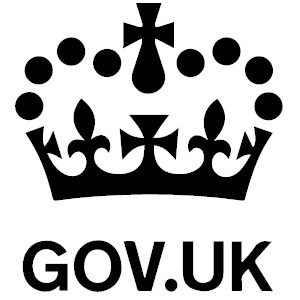As we begin 2025, I am grateful for the opportunity to reflect on my first year as the Chief Technology Officer for UK Defence. This year has been an incredible journey marked by innovation, collaboration, and significant achievements. I joined MOD in late February 2024 to an extraordinarily warm welcome from my team, peers within Defence Digital, and the wider MOD.
Shortly after joining, I summarised our CTO priorities into a "simple" set of three things and I'm pleased with the progress made against all of these areas.
1. Bringing the Technology Aspects of the Digital Backbone to Life
The digital backbone isn't just our infrastructure, or some behind-the-scenes network-it's the foundation of how we do Defence. It powers everything: from soldiers and vehicles to aircraft, ships, satellites, and drones. Think of it as our "true cloud," working seamlessly across classifications and connectivity modes. It ensures data and digital services are available wherever and whenever they're needed, enabling edge computing and rapid decision-making.
The digital backbone is a living, reusable architecture that drives efficiency and interoperability. By reducing duplication and embracing APIs, we're creating a more open and agile system that adapts to operational needs.
Key progress in 2024:
· Significant enhancements and new content created for our reference architecture across all technology architecture domains, too many to list!
· Defence Digital Services (D2S) matured to support SECRET workloads, setting the stage for advanced AI capabilities.
· The Defence Data Analytics Platform (DDAP) expanded to support operations across classifications and is being prepared for wider industry use.
· Delivered our first end-to-end, code-low, deploy-high capability, transforming delivery speed and scale.
· Developed Digital Roadmaps, aligning the backbone with long-term goals, and launched early Reference Architectures, already shaping key procurements like the Secret Community Cloud.
2. Working in Denied and Degraded Connectivity Environments
This started as focusing on SECRET and Above environments, but has now been expanded to include any environment without a stable internet connection, i.e. SECRET+ and the deployed space.
Creating a modern digital ecosystem is straightforward when connectivity and access to "classic cloud" are available. It's much harder when they're not, which can widen the digital divide in both capability development and user experience. To address this, we've focused on architectures that work across classifications and security models in less network-centric ways. This ensures frontline commands can focus on their unique digital capabilities without being held back by connectivity issues.
Key progress in 2024:
· A new CTO Council formed to collaboratively tackle shared connectivity and technology challenges across Defence.
· The Hackathon Success highlighted the talent within Defence teams, driving innovative solutions to connectivity issues.
· Delivered a fast SofS digital dashboard, leveraging existing digital and data foundations for quick deployment even in constrained environments.
Tackling Technology Obsolescence
Technology obsolescence feels like the unwanted party guest-it's always there, but no one want to talk about it. Meanwhile, AI is stealing the spotlight.
Technology obsolescence ties up effort and budget in full-stack silos and point-to-point integrations that duplicate layers without adding value. We urgently need to rationalise and mitigate these risks. If we can free up the sunk costs tied to outdated systems, we'll deliver more, faster, within the same budget.
Key progress in 2024:
· Launched the Technology Reference Model (TRM) to govern digital spend, reduce duplication, and identify capability gaps.
· Dashboards tracking outdated systems across Defence were introduced, with the RAF and Defence Digital leading in reporting.
· The Foundry Team reduced duplication by delivering a shared ecosystem of interdependent services, streamlining early-stage programmes, and advancing the Defence Learning Environment.
There's still a lot to do, and it can feel daunting. But the foundations laid in 2024 ensure we're well-positioned to continue this critical work in 2025 and beyond.
What Does 2025 Hold for Us?
Our three core technology themes remain pivotal in shaping transformation for Defence. Here's what we're focused on:
· Defence Reform: Strengthen governance to oversee the entire digital spend, maximise ROI through reusing backbone services, and strategically focus resources on closing capability gaps and harnessing emerging technologies.
· Obsolescence Management: Implement a consistent, Defence-wide approach to manage obsolescence risks and free up budget and resources to modernise capabilities.
· Accelerating the Digital Backbone: Deliver enhanced digital and data services to empower our war fighters and decision-makers.
· Leveraging Alliances: Double down on investments in NATO, AUKUS, and FVEY to reuse proven solutions and accelerate delivery within our own systems.
· Ecosystem Services: Sharpen our understanding of opportunities and risks in this space to remain agile, connected and innovative.
· Reimagining Innovation: Normalise innovation as problem-solving, prioritising success metrics, and focusing on paths with clear potential for exploitation.
· Driving Productivity and Efficiency: Make better use of existing resources by fostering a supportive culture, optimising processes, and ensuring data is central.
As we step into 2025, I'm filled with a profound sense of excitement and determination. Building on the remarkable work already accomplished, my priority is to ensure our digital backbone remains not just resilient but transformative-ready to adapt and excel in meeting the fast-changing demands of Defence.




